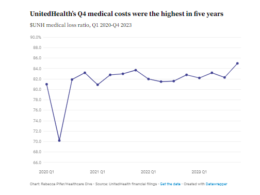The health strategist
research institute, knowledge portal & advisory consulting
for continuous health transformation
and digital health — for all
Joaquim Cardoso MSc.
Servant Leader,
Chief Research & Strategy Officer (CRSO),
Editor in Chief and Senior Advisor
January 15, 2024
This is an excerpt of the publication “Global Risks Report 2024”, published by the World Economic Forum, on January 2024″
As both a product and driver of state fragility, Interstate armed conflict is a new entrant into the top risk rankings over the two-year horizon (Figure C).
FIGURE C Global risks ranked by severity over the short and long term (“Please estimate the likely impact (severity) of the following risks over a 2-year and 10-year period.”)

As the focus of major powers becomes stretched across multiple fronts, conflict contagion is a key concern. There are several frozen conflicts at risk of heating up in the near term, due to spillover threats or growing state fragility.
This becomes an even more worrying risk in the context of recent technological advances.
In the absence of concerted collaboration, a globally fragmented approach to regulating frontier technologies is unlikely to prevent the spread of its most dangerous capabilities and, in fact, may encourage proliferation.
Over the longer-term, technological advances, including in generative AI, will enable a range of non-state and state actors to access a superhuman breadth of knowledge to conceptualize and develop new tools of disruption and conflict, from malware to biological weapons.
In this environment, the lines between the state, organized crime, private militia and terrorist groups would blur further.
A broad set of non-state actors will capitalize on weakened systems, cementing the cycle between conflict, fragility, corruption and crime.
Illicit economic activity (#31) is one of the lowest-ranked risks over the 10-year period but is seen to be triggered by a number of the top-ranked risks over the two- and 10-year horizons (Figure D).
Economic hardship – combined with technological advances, resource stress and conflict – is likely to push more people towards crime, militarization or radicalization and contribute to the globalization of organized crime in targets and operations.
The growing internationalization of conflicts by a wider set of powers could lead to deadlier, prolonged warfare and overwhelming humanitarian crises.
With multiple states engaged in proxy, and perhaps even direct warfare, the incentives to condense decision time through the integration of AI will grow.
The creep of machine intelligence into conflict decision-making – to autonomously select targets and determine objectives – would significantly raise the risk of accidental or intentional escalation over the next decade.












